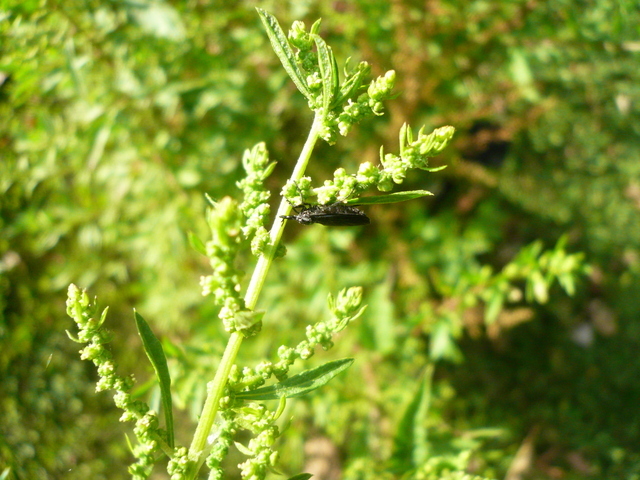Interactions
The interactions of this organism vary a great deal mainly because parts
of the plant are beneficial, especially to humans, and other parts
of this plant, like the seeds, contain a toxic oil. This makes for
very unique relationships with organisms that are specific to
different parts of the plant.
This makes for
very unique relationships with organisms that are specific to
different parts of the plant.
For instance, the fact that the seeds contain a toxic oil, mainly composed of
ascaridole, and the plant in general has a very ‘unique’ and strong
odor combine to deter a great deal of insects
from calling this plant dinner or even home. Since many insects tend to stay away from this plant
this sets up a situation that
allows for the insects that can tolerate the pungent odor to use the
plant for a means of protection or in some cases unique methods of
predation.
There are plenty of insects that simply steer clear of this plant,
not only because of its pungent odor, but because it contains a toxic oil. The main inhabitants of
Chenopodium a. are members of the phylum arthropoda, the
majority of which include predatory insects and spiders. The bugs that can
tolerate the smell have adopted this plant as both a means for
shelter and a hide out that is perfect for preying on the less
fortunate insects around them. The predatory insects use the plant
to rest after a long day of preying on these other insects. They are able to
do so because while they are 'resting' in the plant it
is highly unlikely other bugs will bother them since most can't
stand to be around this plant's odor.
odor, but because it contains a toxic oil. The main inhabitants of
Chenopodium a. are members of the phylum arthropoda, the
majority of which include predatory insects and spiders. The bugs that can
tolerate the smell have adopted this plant as both a means for
shelter and a hide out that is perfect for preying on the less
fortunate insects around them. The predatory insects use the plant
to rest after a long day of preying on these other insects. They are able to
do so because while they are 'resting' in the plant it
is highly unlikely other bugs will bother them since most can't
stand to be around this plant's odor.
Next:
Medicinal Uses
Back to
Home